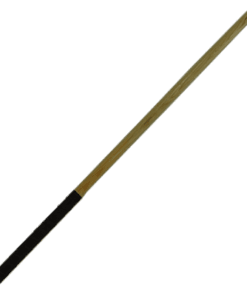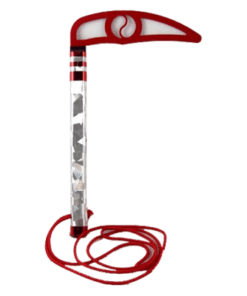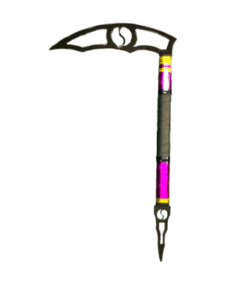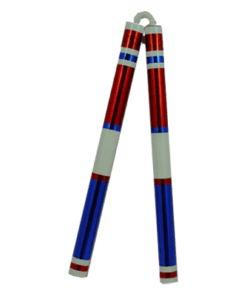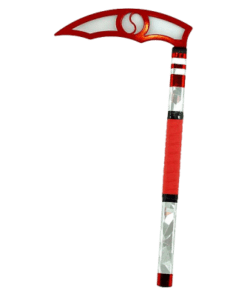Kali – Arnis – Escrima Sticks
Kali – Arnis – Escrima Sticks
FEATURED CATEGORIES
Kali, Arnis, and Escrima: The Three Martial Arts of the Philippines
Kali, Arnis, and Escrima are three terms that refer to the traditional martial arts of the Philippines. While the three terms are often used interchangeably, they do have some slight differences. Kali is considered to be the most ancient of the three, and is often used as a catch-all term to refer to the Filipino martial arts as a whole. Arnis, on the other hand, is a more specific term that refers to the stick-based techniques of the martial art. Escrima is another term for stick-fighting, but is often used to refer specifically to the weapon-based techniques of the martial art.
These martial arts have a rich history and have been passed down through generations of Filipino families. They were originally developed as a means of self-defense against invaders, and were used to protect the Philippines from colonization. Today, Kali, Arnis, and Escrima are popular martial arts that are practiced all over the world. They are known for their practicality and effectiveness, and are often used by law enforcement and military personnel.
The techniques of Kali, Arnis, and Escrima are varied and complex. They include striking, grappling, and weapon-based techniques, and are often taught in a progressive manner that emphasizes the importance of mastering the basics before moving on to more advanced techniques. Students of these martial arts are taught to be aware of their surroundings and to use whatever tools are available to them in a self-defense situation. Overall, Kali, Arnis, and Escrima are fascinating martial arts with a rich cultural history, and are well worth exploring for anyone interested in the martial arts.
Overview of Kali, Arnis, Escrima
Kali, Arnis, and Escrima are three terms often used interchangeably to describe the martial arts of the Philippines. These martial arts have a rich history and are known for their use of weapons such as sticks, knives, and bladed weapons, as well as open-hand techniques without weapons.
Arnis is the national martial art of the Philippines, while Kali and Escrima are regional terms that refer to the same martial art. Kali is often used in the southern regions of the Philippines, while Escrima is more commonly used in the central and northern regions.
The Filipino Martial Arts (FMA) are a unique blend of indigenous Filipino fighting techniques and influences from other cultures such as China, Indonesia, and Spain. The FMA are known for their practicality, efficiency, and adaptability, making them popular among law enforcement and military personnel around the world.
One of the distinguishing features of the FMA is their use of weapons training, which is integrated into the curriculum from the beginning. This is in contrast to many other martial arts, where weapons training is often reserved for more advanced students.
The FMA also place a strong emphasis on footwork and body mechanics, which are essential for effective weapon use and self-defense. The footwork used in the FMA is often compared to dancing, with practitioners moving in and out of range and changing directions fluidly.
Overall, the FMA are a rich and diverse set of martial arts with a strong emphasis on practicality and adaptability. Whether you are interested in learning self-defense, improving your physical fitness, or exploring a unique cultural tradition, the FMA have something to offer.
Historical Background
Kali, Arnis, and Escrima are traditional martial arts that originated in the Philippines. These arts are also known as Filipino Martial Arts (FMA). The history of these arts is deeply intertwined with the history of the Philippines, its people, and its culture.
During the colonial period of the Philippines, which lasted from 1521 to 1898, the Spanish encountered local Filipino martial arts. The Spanish term "esgrima," which means "fencing," was used to describe the use of sticks as weapons. This led to the term "Eskrima," which is still used today to describe Filipino stick fighting.
The different regions of the Philippines developed their own versions of the martial arts, and each region had its own preferred terminology. The Tagalog people, for example, used the term "Arnis," while the Visayas people used the term "Kali." The term "Eskrima" was used more widely across the country.
The martial arts were used by different tribes in the Philippines as a means of self-defense and as a way to settle disputes. The techniques and strategies of these arts were passed down from generation to generation and became an important part of the culture of the Philippines.
In 2019, the United Nations Educational, Scientific, and Cultural Organization (UNESCO) included Kali, Arnis, and Escrima on its Intangible Cultural Heritage Lists. This recognition highlights the importance of these martial arts in the cultural heritage of the Philippines and the world.
Today, Kali, Arnis, and Escrima are practiced all over the world, and their popularity continues to grow. These martial arts are valued for their practicality, effectiveness, and cultural significance.

Key Techniques and Training
Kali, Arnis, and Escrima are weapons-based martial arts that originated in the Philippines. These martial arts are known for their practicality and effectiveness in real-world self-defense situations. To become proficient in Kali, Arnis, and Escrima, one must master the key techniques and training methods that are unique to these martial arts.
Stick Fighting
Stick fighting is the cornerstone of Kali, Arnis, and Escrima. Practitioners learn to use sticks of varying lengths and thicknesses to simulate the use of other weapons such as knives and bladed weapons. Stick fighting techniques include sinawali, banda y banda, redonda, san miguel, and abanico. These techniques teach practitioners how to defend themselves against an opponent armed with a stick or other weapon.
Knife Fighting
Knife fighting is another critical aspect of Kali, Arnis, and Escrima. Practitioners learn how to use knives for both offense and defense. Techniques include puño, witik, and various locking and disarming techniques. Knife fighting training emphasizes precise footwork and striking techniques, as well as the ability to defend against a knife-wielding opponent.
Footwork and Striking
Footwork is essential in Kali, Arnis, and Escrima. Practitioners learn triangular footwork, also known as hakbang, which allows for quick, lateral movement. Striking techniques include punches, kicks, and elbow and knee strikes. These techniques are practiced with both weapons and empty hands and are designed to be effective in close-quarters combat.
Locks and Disarms
Locks and disarms are critical techniques in Kali, Arnis, and Escrima. Practitioners learn how to disarm an opponent who is armed with a weapon and how to lock an opponent's joints to immobilize them. These techniques require precise timing and coordination and are often practiced in a controlled environment to ensure safety.
In conclusion, mastering the key techniques and training methods of Kali, Arnis, and Escrima requires dedication and practice. By learning stick fighting, knife fighting, footwork and striking, and locks and disarms, practitioners can become proficient in these martial arts and defend themselves effectively in real-world situations.
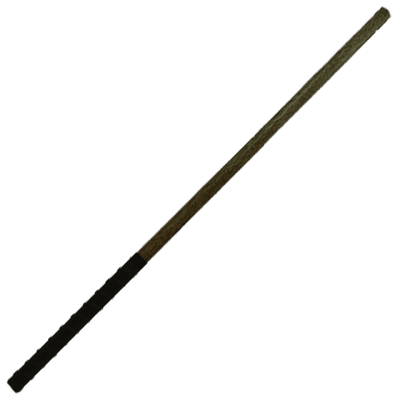
Weapons Used in Filipino Martial Arts
Filipino Martial Arts (FMA) are known for their extensive use of weapons. In fact, weapon-based fighting is the hallmark of these martial arts. The three primary disciplines of FMA - Kali, Arnis, and Escrima - all emphasize the use of weapons. Here are some of the weapons commonly used in Filipino Martial Arts.
Sticks and Batons
Sticks and batons are the most commonly used weapons in FMA. These weapons are known by several names, including "escrima sticks," "arnis sticks," and "kali sticks." They are typically made of rattan, a lightweight and durable material that is easy to grip. The sticks are used for both offensive and defensive purposes, and practitioners are trained to use them in a wide range of techniques. Sticks can also be used in pairs, known as "double sticks," or in combination with other weapons.
Knives and Daggers
Knives and daggers are also commonly used in FMA. These weapons are known as "kris," "karambit," and "box cutters." They are typically used for close-range combat and are designed to inflict maximum damage. Practitioners are trained to use knives and daggers in a wide range of techniques, including thrusting, slicing, and stabbing. These weapons are also used in combination with other weapons, such as sticks and swords.
Swords and Bolos
Swords and bolos are the most lethal weapons used in FMA. These weapons are known as "machete" and "bolo." They are typically used for long-range combat and are designed to inflict serious damage. Practitioners are trained to use swords and bolos in a wide range of techniques, including slashing, thrusting, and chopping. These weapons are also used in combination with other weapons, such as sticks and knives.
In conclusion, the use of weapons is an integral part of Filipino Martial Arts. Sticks and batons, knives and daggers, and swords and bolos are just a few of the weapons commonly used in FMA. Practitioners are trained to use these weapons in a wide range of techniques, and they are often used in combination with other weapons.

Prominent Styles and Schools
Kali, Arnis, and Escrima are umbrella terms for the traditional martial arts of the Philippines. These martial arts emphasize weapon-based fighting with sticks, knives, bladed weapons, and various improvised weapons, as well as "open hand" techniques without weapons. Here are some prominent styles and schools of these martial arts:
Doce Pares
Doce Pares is a popular style of Kali, Arnis, and Escrima that was founded in the 1930s by Eulogio Cañete. It is named after the twelve pairs of escrimadors who helped develop the style. Doce Pares is known for its emphasis on the use of live sticks in training and its focus on close-range combat. The style is characterized by its use of angles of attack and defense, as well as its use of disarms and locks.
Balintawak
Balintawak is a style of Kali, Arnis, and Escrima that was founded by Venancio Bacon in the 1950s. It is named after the street in Cebu City where Bacon lived and taught. Balintawak is known for its emphasis on close-range combat and its use of the single stick. The style is characterized by its use of quick, direct strikes and its emphasis on footwork and timing.
Modern Arnis
Modern Arnis is a style of Kali, Arnis, and Escrima that was founded by Remy Presas in the 1960s. It is a modernized version of the traditional Filipino martial arts that incorporates elements of other martial arts, such as Judo and Karate. Modern Arnis is known for its emphasis on stick and knife fighting, as well as its use of joint locks and throws. The style is characterized by its use of flowing, circular movements and its emphasis on self-defense.
These are just a few of the many styles and schools of Kali, Arnis, and Escrima. Other styles include Arnis de Mano, Pagaradman, Kuntaw, Silat, Kaliradman, Kalirongan, Pagkalikali, and Fraile. These traditional martial arts continue to be practiced and taught around the world, and their popularity only continues to grow.

Influence and Popularity
Kali, Arnis, and Escrima have gained popularity and recognition worldwide as a result of the efforts of various organizations, practitioners, and enthusiasts. The National Martial Art of the Philippines has gained a reputation as an effective self-defense system, a sport, and a combat art.
One of the reasons for the popularity of Kali, Arnis, and Escrima is their association with Bruce Lee. Dan Inosanto, a student of Bruce Lee, was instrumental in introducing these martial arts to the United States. Inosanto was one of the first non-Filipinos to learn Kali, Arnis, and Escrima from the Philippines. Bruce Lee, who was also a student of Dan Inosanto, was intrigued by the Filipino martial arts and incorporated some of their techniques into his own Jeet Kune Do style.
Kali, Arnis, and Escrima have also gained popularity in Hollywood. Many action movies feature fight scenes that incorporate these martial arts. The World Eskrima Kali Arnis Federation (WEKAF) is an organization that promotes these martial arts as a sport. The organization has held numerous international competitions, and the sport has gained a following in many countries.
The popularity of Kali, Arnis, and Escrima has also led to the formation of various organizations dedicated to the promotion and preservation of these martial arts. The WEKAF is one such organization. The Philippine-based National Arnis Association (NARAPHIL) is another organization that promotes these martial arts.
In summary, Kali, Arnis, and Escrima have gained popularity and recognition as a result of their association with Bruce Lee, their appearance in Hollywood movies, their adoption as a sport by the WEKAF, and the efforts of various organizations dedicated to their promotion and preservation.
Culture and Philosophy
Filipino martial arts (FMA), including Kali, Arnis, and Escrima, have a deep connection to the culture and philosophy of the Philippines. One of the key principles of FMA is respect. This respect is not only for the art itself but also for the practitioners and opponents. Respect is shown through the use of proper terminology, bowing, and the observance of traditions.
Discipline is another important aspect of FMA. Practitioners are expected to train hard and consistently to master the techniques and principles of the art. This discipline is not only physical but also mental, as it requires focus and dedication.
Blade culture is also an integral part of FMA. The use of bladed weapons is a central aspect of the art, and practitioners are trained to use these weapons with precision and efficiency. However, FMA also emphasizes self-preservation, and practitioners are taught to defend themselves against armed and unarmed opponents.
Venancio "Anciong" Bacon, Edgar Sulite, and Cacoy Canete are some of the notable figures in the history of FMA. Bacon is considered one of the founders of modern Arnis, while Sulite was a renowned practitioner and teacher of Lameco Eskrima. Canete was a master of Doce Pares Eskrima and was known for his skill in stick fighting.
Overall, the culture and philosophy of FMA emphasize respect, discipline, and the preservation of life. These principles are reflected in the techniques and training methods of the art, making it not just a physical practice but also a way of life.
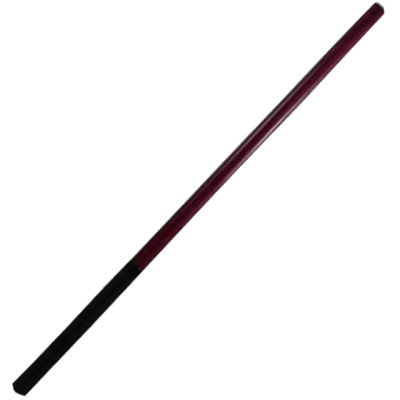
Unarmed Techniques
Kali, Arnis, and Escrima are primarily known for their use of weapons, but they also have a rich tradition of unarmed techniques. These techniques are collectively known as "Mano Mano" and are an integral part of the FMA system. In this section, we will look at some of the most popular unarmed techniques used in Kali, Arnis, and Escrima.
Mano Mano
Mano Mano is the unarmed component of Kali, Arnis, and Escrima. It includes a wide range of techniques such as strikes, kicks, throws, locks, and chokes. The techniques are designed to be effective in real-world situations and can be used against armed or unarmed opponents.
Sikaran
Sikaran is a Filipino martial art that focuses on kicks. It is often used in conjunction with Arnis and Escrima to create a complete fighting system. Sikaran uses a variety of kicks, including front kicks, side kicks, roundhouse kicks, and spinning kicks. The kicks are delivered with speed and power and can be used to strike an opponent's legs, body, or head.
Dumog
Dumog is the Filipino art of grappling. It is similar to wrestling and includes techniques such as throws, takedowns, and joint locks. Dumog is often used in conjunction with Arnis and Escrima to create a complete fighting system. It is an effective way to control an opponent and can be used to take them to the ground or to submit them.
Yaw-Yan
Yaw-Yan is a Filipino martial art that focuses on striking techniques. It includes a wide range of strikes, including punches, kicks, elbow strikes, knee strikes, and headbutts. Yaw-Yan also includes techniques such as throws, takedowns, and joint locks. It is a complete fighting system that is effective in both armed and unarmed combat.
In conclusion, Kali, Arnis, and Escrima have a rich tradition of unarmed techniques that are just as effective as their weapon techniques. Mano Mano, Sikaran, Dumog, and Yaw-Yan are just a few examples of the many techniques used in FMA. Whether you are looking to learn self-defense or just want to improve your martial arts skills, Kali, Arnis, and Escrima have something to offer.
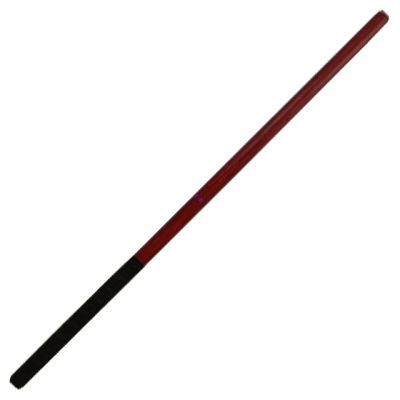
Improvised and Armour Techniques
In Kali, Arnis, and Escrima, practitioners are taught to use a variety of weapons, including sticks, knives, and bladed weapons. However, these martial arts also place a strong emphasis on improvised weapons and armour techniques.
Improvised weapons are objects that, in a pinch, can be used as weapons. Practitioners are taught to use everyday objects such as pens, belts, and even rolled-up newspapers as weapons. This is because these arts believe that the ability to defend oneself should not be limited by the availability of weapons.
Armour techniques are also a crucial part of these martial arts. In fact, the term "Arnis" comes from the Spanish term "Arnes de mano," which means "armour of the hands." Practitioners are taught to use their weapons to protect themselves, as well as to use their bodies as a form of armour. For example, they may use their arms to block incoming strikes or to deflect blows.
One region that is particularly known for its armour techniques is Batangas, a province in the Philippines. Batangas is known for its "armorada" style of Arnis, which emphasizes the use of armour and shields. Practitioners of this style are taught to use shields made from materials such as rattan or bamboo to protect themselves from incoming strikes.
Overall, the emphasis on improvised weapons and armour techniques in Kali, Arnis, and Escrima reflects the practical nature of these martial arts. By teaching practitioners to use everyday objects as weapons and to protect themselves with their bodies, these martial arts ensure that practitioners are always prepared to defend themselves, even in unexpected situations.
Regional Variations
Kali, Arnis, and Escrima are umbrella terms for various martial arts systems in the Philippines. Different regions in the Philippines may prefer one term over the others, reflecting regional preferences and language differences.
In the Visayas region, particularly in Cebu, the term "Escrima" is commonly used to refer to the martial art. The Cebuano style of Escrima is known for its emphasis on close-range combat techniques and its use of the corto (short), medio (medium), and largo (long) ranges.
In Luzon, the term "Arnis" is more commonly used and is often associated with the northern style of the martial art. The Northern Luzon style of Arnis is known for its use of double sticks and its emphasis on long-range combat techniques.
In Mindanao, the term "Kali" is more commonly used to refer to the martial art. The Mindanao style of Kali is known for its emphasis on bladed weapons and its use of dagger techniques.
Despite these regional variations, Kali, Arnis, and Escrima share many similarities. All three martial arts emphasize weapon-based fighting with sticks, knives, bladed weapons, and various improvised weapons, as well as open-hand techniques without weapons.
Overall, the regional variations in Kali, Arnis, and Escrima reflect the diverse cultural and linguistic heritage of the Philippines.
Contact Us Today!
Website: https://bukiyuushuu.net/
Phone Number: +1 (860) 415-4166
Email: [email protected]
Address: 300 Taugwonk Rd, Stonington, CT 06378

